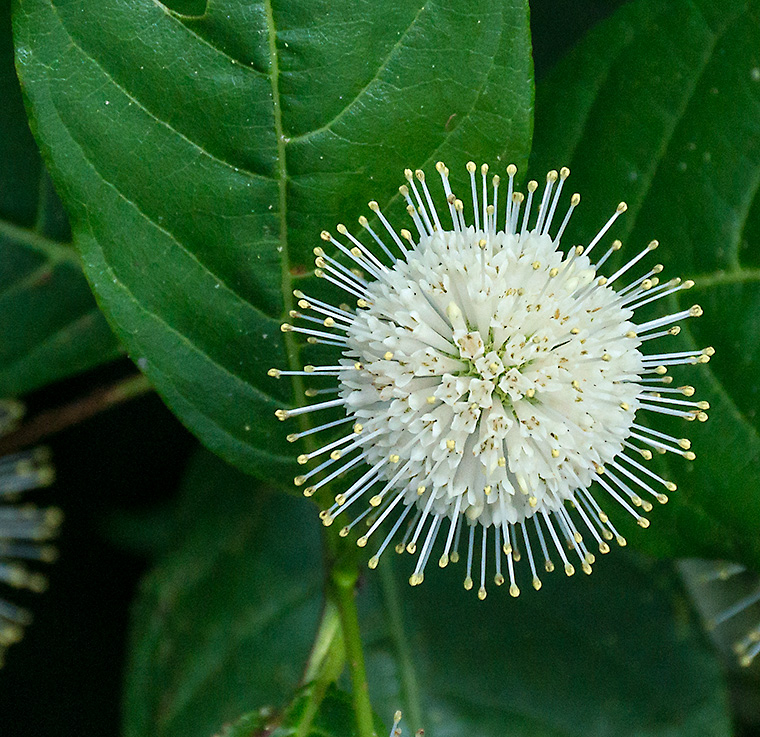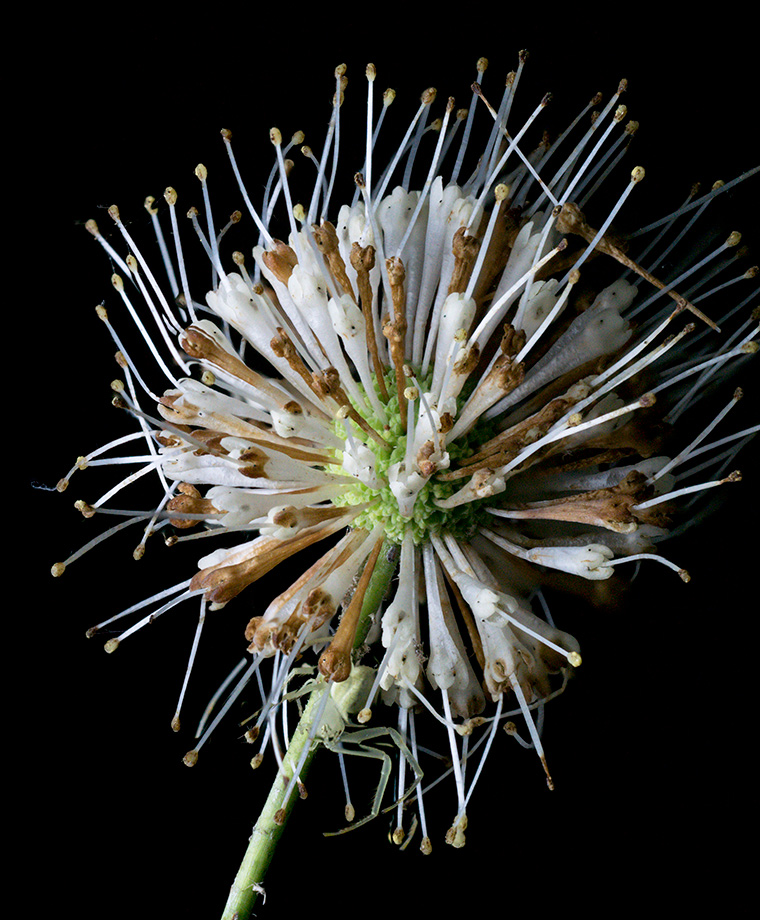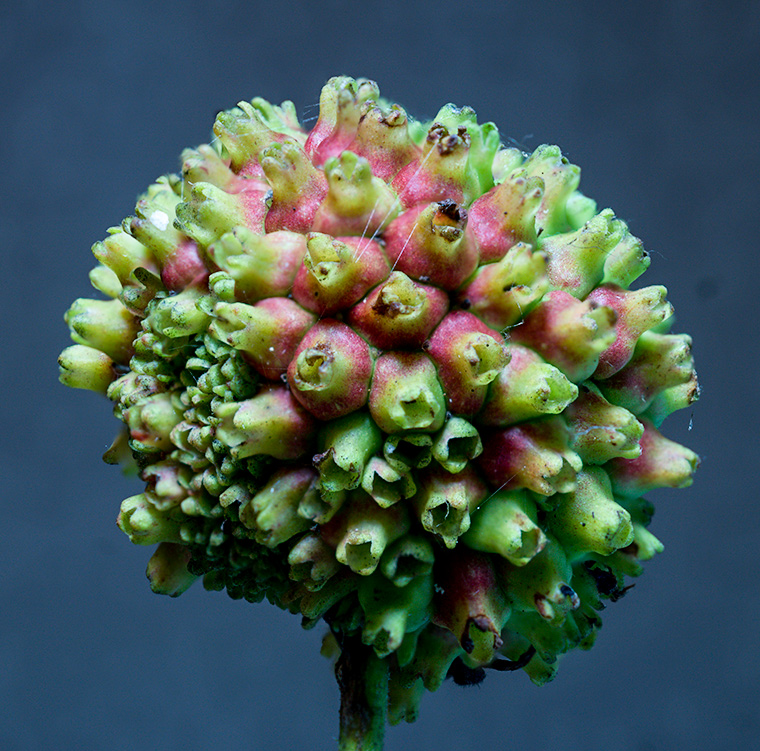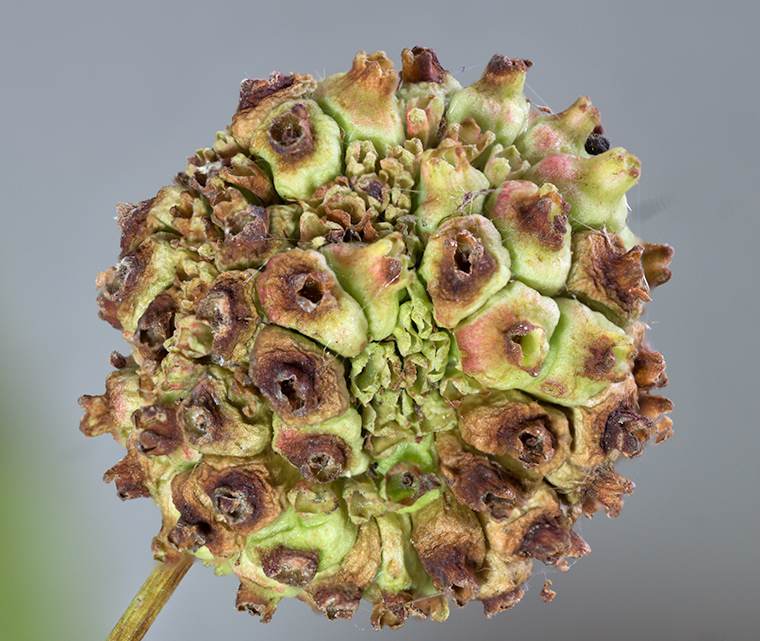The plant featured in this post is Buttonbush (Cephalanthus occidentalis). It grows around the shores of the lake behind our house, and it is always found in wet places around here. You can find it in the wild in zones 5-9.
The photograph above shows a flower cluster of the plant as it appeared last summer. If you look closely, you will see that the structure is actually a group of small five-sided flowers. A long style protrudes from the center of each flower and gives the flower cluster a pincushion-like appearance. Each long style has a yellowish stigma on the outer end and is attached to the ovary of the flower on the end nearest the flower cluster. Pollen must land on the stigma for the flowers to be fertilized and ultimately produce seeds. The stamens are short and do not protrude much from the petals of each flower. You may be able to see some stamens on flowers near the center of this photograph. They appear as small dark dots around the inside of each flower. Mature flower heads are 1.5 to 2 inches in diameter.
At a slightly more mature stage, many of the flowers have been fertilized and the tubular nature of the flowers can be clearly seen. The petals of each flower are attached to a bright green, round core at this stage. (A bonus if you spot the spider in this photograph).
In this photograph, all the petals have fallen from the green core. The ovaries of the flowers are in the compartments of the green core, so the seeds will develop there. At this stage, the core is about 3/4 of an inch in diameter. The red color visible at the base of some flowers has been selected in some cultivars of Buttonbush so that the entire seed head is a deep red.
I collected this flower head just this past weekend (November 11). The larger bases of the flower head have arisen from fertilized flowers and are expanding to produce seeds. Each large compartment should produce two small black seeds. I will try to collect a later stage when the seeds are more mature and visible, but I will have to beat the birds to them.
The smaller, crowded compartments are the remains of flowers which were not fertilized.
Please note: The various photographs in this post are from different plants, so this is not a true developmental sequence of a single flower cluster.




